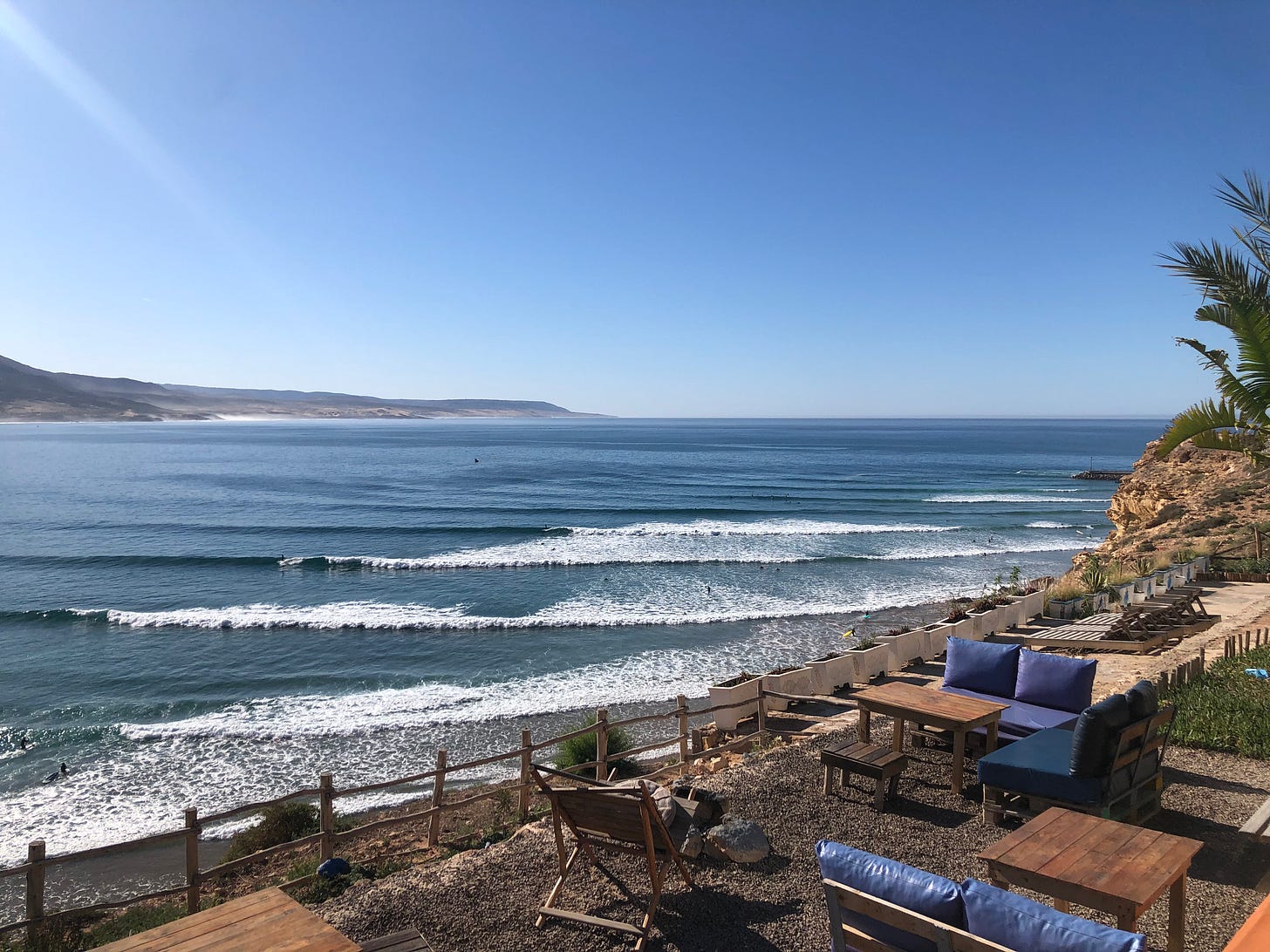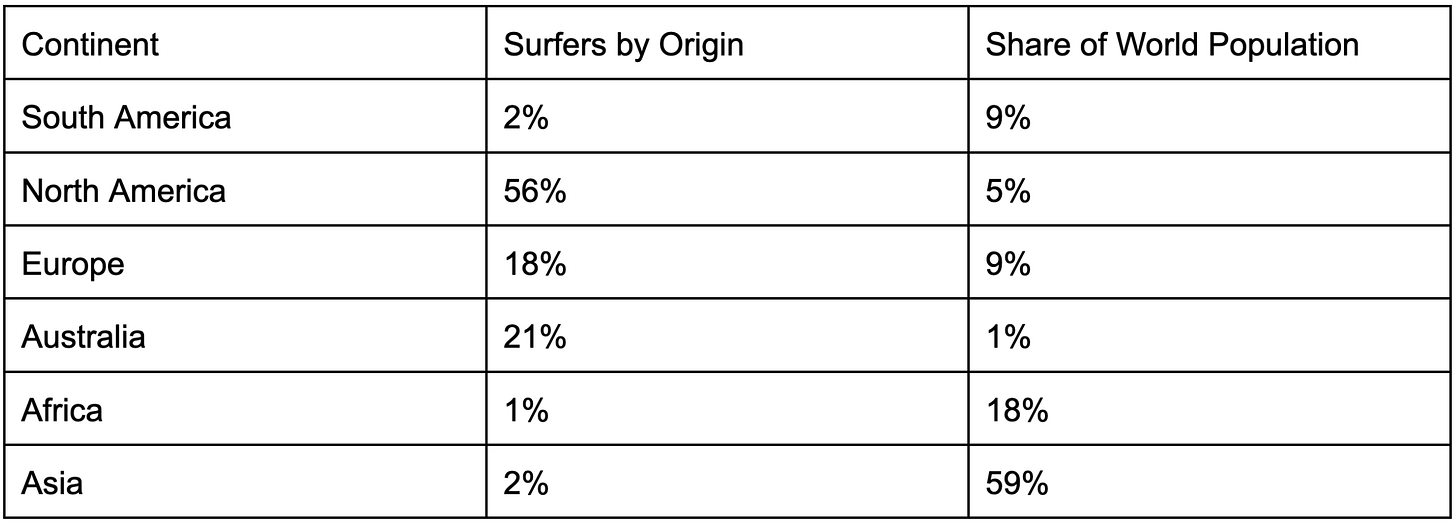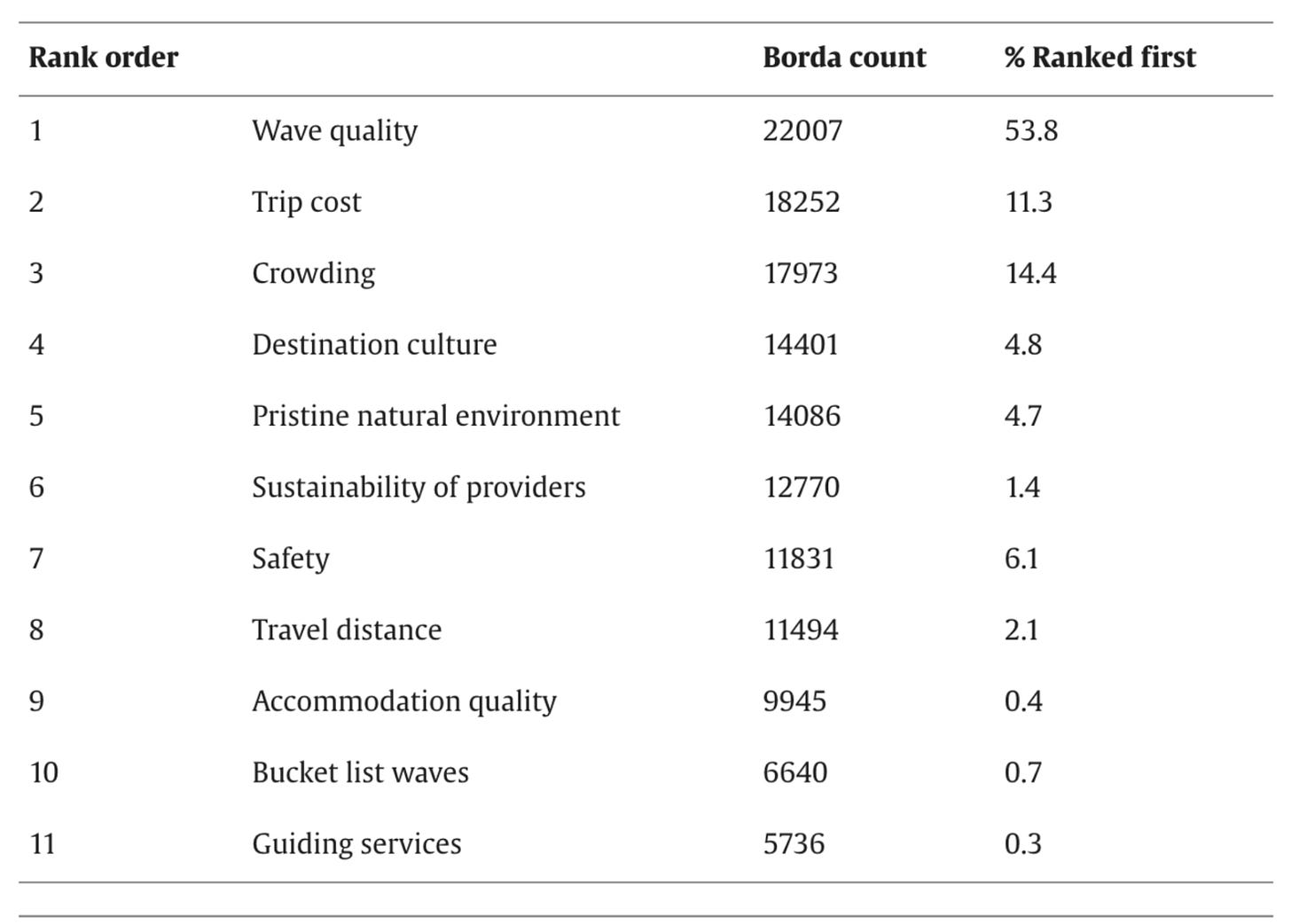Surfing as a Path to Prosperity
Surfing is a huge market and growing in popularity, especially in rapidly developing countries. This article outline how entrepreneurs and communities can ride the wave to economic success.
I have previously written about surfing as development - how communities can turn the gift of gnarly waves into economic success. Surfing has the potential to transform coastal regions. It can create more tolerant, more prosperous and better-skilled communities. Here, I’ll share the reasons for my optimism and how entrepreneurs and leaders can take advantage of the growing popularity of surfing.
To build a local surf economy, there are a few non-negotiable factors you need to have or you’re dead on arrival, this includes:
Decent weather
1-3 metre waves
Not too crowded beaches
A clean environment
If you have these factors, you’re off to a good start. If you can pair it with an authentic and unique culture, then you might have a winner on your hands.
The stereotype of the surfer is a tight-pursed hippie who stays in run-down hostels and can’t afford shampoo, or at least, doesn’t like shampoo. This is not true. Surfers typically spend between $1,000 to $3,000 on international surf trips, with an average of $2,000 (source). The average number of international trips per surfer is roughly 1.5 per year. Not only that, the number of surfers is big and getting bigger. There are an estimated 26 million surfers across the globe (source) and this number is increasing across the developing world in particular. Annual surf tourism expenditure is estimated to be $31.5 to $64.9 billion (source), with the surf equipment market alone worth around $5.5 billion per year (source). Overall, the market it growing at 4-6% per year.
So now that I’ve convinced you that this is a large and growing market, let’s see where exactly the future growth areas might be. Have a look at this table showing surfers by world region:
It is stark seeing how skewed participation in surfing is towards the richer Western countries, particularly those, like Australia and USA that are blessed with ideal geography for fat waves. The good news is that the rest of the world is getting richer and more culturally Westernised. As the noted investor Marc Andreessen has noted “The internet is like a giant assimilation machine into Western culture”. As countries in Asia, Africa and South America get connected to the internet they also become more culturally Westernised and more likely to take up surfing. We’re already seeing this happening in places like Morocco. This is the hope that is supported by the data and the experiences of anyone who has visited developing surf spots over the last decade. The lesson here for the surf industry is to start targeting consumers in the ascendant parts of the world. After all, it’s relatively easy to use social media platforms to target customers on the other side of the globe.
Now we know which places to find customers, lets find out what appeals to them most. What do surfers prioritise when they go on a surf trip? The table below (source) shows how 2000 surfers ranked different attributes that are important to them in a surf holiday. No surprises that wave quality comes out at a comfortable number one spot. In surfing, geography is everything and no mortal can change geography. The top attributes that entrepreneurs have some control over are the trip cost and the destination culture. These are the two most important factors for entrepreneurs to focus on. Other factors include the sustainability of providers, safety, travel distance, accommodation quality and guiding services. The latter being more important to beginners and junior surfers.
The lesson for entrepreneurs is to focus on providing a unique cultural experience. In this regard, countries outside of Europe and North America are at an advantage since they can offer a cultural experience that is unfamiliar to most travellers. Recall that Anglo-American culture is familiar to anyone who can afford a Netflix subscription, most travellers want something different. We're already surrounded by Anglo culture and most travellers seek something new and unique. Focussing on unique local cultural experiences can be a huge advantage to entrepreneurs in the surf space. The lesson for service providers is to think about the food, architecture, art and experiences that can provide surfers with an immersive cultural experience.
The second key lesson from this research is to provide experiences and accommodation at a number of different price points. A double room with a balcony is ideal for the seasoned older surfers who tend to have higher incomes. The 8-person dormitory rooms are ideal for the Gen-Z student surfers who have lower incomes.
Another important trend that surf leaders can take advantage of is the rise in female participation in surfing. The percentage of surfers who were women rose from roughly 5% in the early 1990s to around 30% today. While the sport is still skewed heavily in favour of males, there is a clear trend line. Entrepreneurs in the surf industry should be capitalising on this by marketing to women and offering experiences that cater to their tastes. It is common to find yoga hotels that offer experiences for groups of women, the same could become a norm in the surfing space.
The health and wellness aspect of surfing has also been growing in popularity and has become the reason many choose to go on surfing trips. For some, the surf trip is a break from the weekend drinks and 8 hours a day spent staring at a laptop. More and more surf providers are pairing their offerings with health and wellness.
All in all, it’s a good time be part of the growing surf industry. With its recent addition as an Olympic sport and growing participation from people of all places and backgrounds, now is the time for entrepreneurs to step up and provide the products and services that surfers want. Smart surf leaders will pick locations with the ideal geography. They will prioritise the cultural experience and provide services at a variety of different price points. They will cater the experience and marketing efforts towards the large numbers of newcomers to the sport and find them through new social media channels. As I’ve said at the outset, surfing has the potential to transform coastal towns. It can create more tolerant, more prosperous and better skilled communities. It’s up to entrepreneurs in the surf industry to create this better future.





I agreed it’s big market but share of Asia and Africa is too little one need to work in these area
Both continent has huge potential and large population
Especially in China